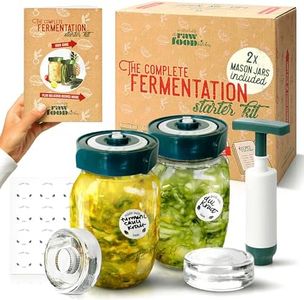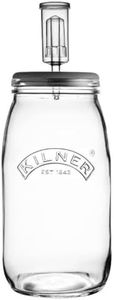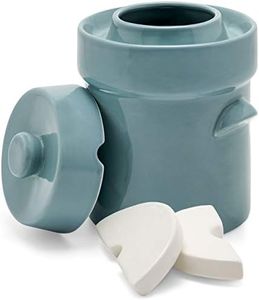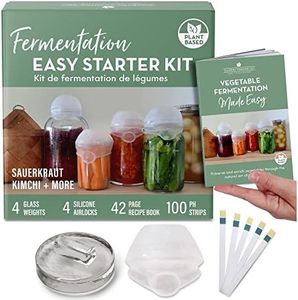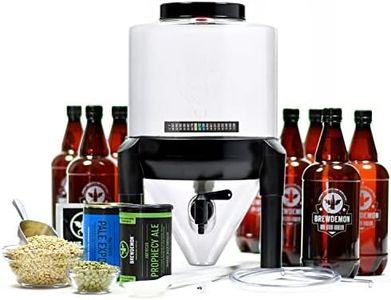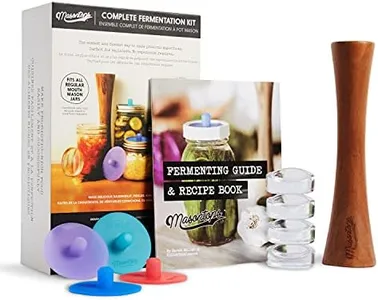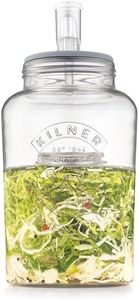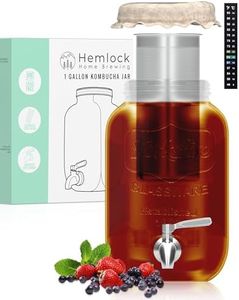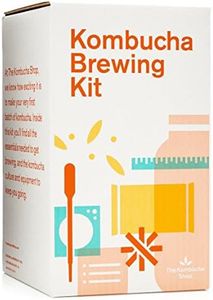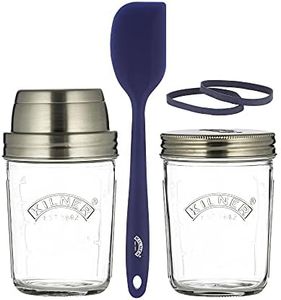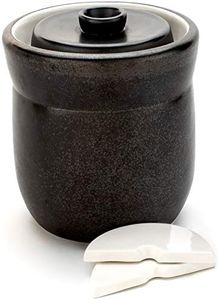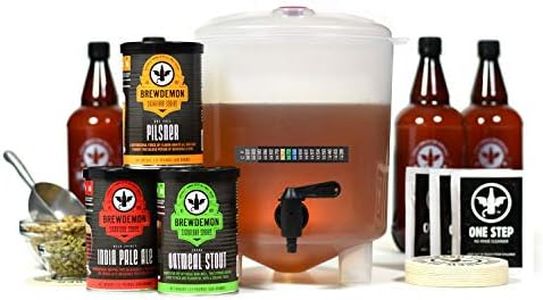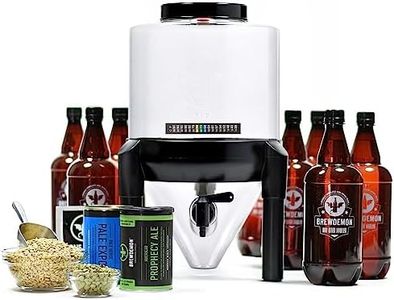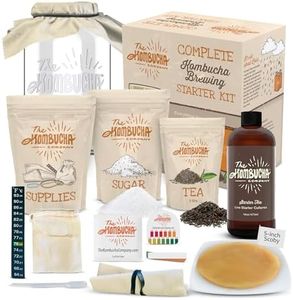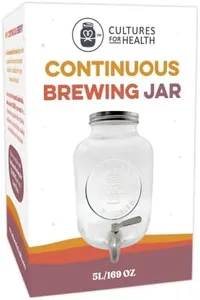We Use CookiesWe use cookies to enhance the security, performance,
functionality and for analytical and promotional activities. By continuing to browse this site you
are agreeing to our privacy policy
10 Best fermenting kits
From leading brands and best sellers available on the web.Buying Guide for the Best fermenting kits
Fermenting kits are a great way to get started with making your own fermented foods and drinks at home, like sauerkraut, kimchi, kefir, or kombucha. Choosing the right kit can make the process easier, more enjoyable, and help you achieve better results. When picking a fermenting kit, focus on features that fit your specific interests—what you want to ferment, how much you plan to make at one time, and how much control or convenience you want in the process.Container MaterialThe container material is what the main vessel for fermentation is made from, usually glass, plastic, or ceramic. The material matters because it affects the safety, durability, and flavor of your ferments. Glass is popular because it's non-reactive and easy to clean, ceramic provides traditional style and good insulation, while food-grade plastic is lightweight and affordable but may absorb odors over time. People who prioritize purity and ease of maintenance often choose glass, while those after tradition and insulation might go for ceramic. Consider what you'll be fermenting and how much maintenance effort you prefer before picking.
Airlock SystemAn airlock system controls how air moves in and out of the fermenting container, often using a vent, valve, or water lock. This is important because fermentation produces gases, and an airlock prevents outside air (which may contain spoilage organisms) from getting in, reducing the risk of spoilage. Some kits use simple lids you have to 'burp,' while others offer automatic airlocks. If you want a set-it-and-forget-it approach and less hands-on care, choose a kit with a built-in airlock.
Batch Size (Capacity)Batch size refers to how much food or liquid you can make in one go, usually ranging from small jars (under a liter) to large crocks (several gallons). This matters depending on whether you want to try out small batches of different recipes or make a large amount of the same ferment. Individuals or first-timers may prefer to start small, while bigger households or enthusiasts may want larger capacity to reduce effort per batch.
Accessories IncludedAccessories include weights (to keep food submerged), pounders (to pack produce), recipe guides, and sometimes thermometers. The presence and quality of these extras can influence your fermenting experience, making it easier and more consistent. People new to fermenting benefit from comprehensive kits with helpful guides, while experienced users may focus just on the essentials they need.
Ease of CleaningEase of cleaning is how simple it is to wash and maintain your fermenting kit between uses. Smooth glass and some ceramic kits are easier to clean and don't retain smells or stains, whereas kits with many small parts or textured surfaces can be harder to keep sanitary. If you value low-maintenance tools or have limited time for cleaning up, look for kits with wide-mouth jars, simple lids, and dishwasher-safe parts.
Type of FermentSome kits are purpose-built for specific types of fermentation, such as kombucha, kefir, or pickles, while others are more versatile. This matters because certain ferments may need special spouts, breathable covers, or different shapes. Match your choice to what you most want to make—if you want to experiment, a general-purpose kit is best, but if your heart is set on one type, look for a specialized kit designed for that ferment.
